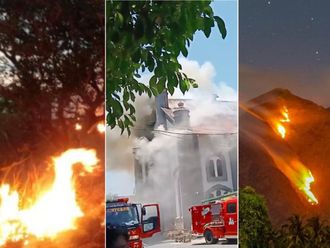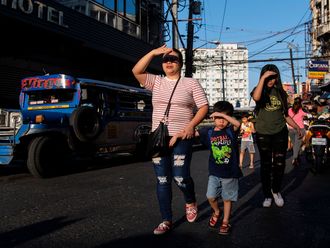Manila: Senators on Sunday urged the conduct of a massive drive to prepare Filipinos for natural calamities in the aftermath of the devastating earthquake and tsunami that recently hit Japan.
Senator Edgardo Angara said a focused drive is necessary to achieve a level of national disaster preparedness that would make the country better equipped to handle natural calamities.
Angara, chair of the Congressional Commission on Science, Technology, and Engineering (COMSTE), said that the devastating 8.9 magnitude earthquake that hit Japan that caused massive damage and triggered worldwide tsunami warnings, means that the quake doomsday scenarios that had largely been dismissed in the past is a real and present danger.
"The massive earthquake which rocked Japan was the 7th strongest on record…It also sent warning signals all around the countries in the Pacific Ring of Fire, including the Philippines," said Angara.
During onslaught of huge, earthquake-triggered waves in Japan, also prompted the Philippines to issue a level 2 tsunami warning.
At least 50,000 Filipinos leaving in the coastal areas of the country were forced to evacuate to higher ground.
Angara warned: "it is only a matter of time before we are stricken by another great catastrophe. The science is there telling us that the risk is real. Our experiences in the past couple of decades alone has shown us the fact that our country is prone to disasters, and as such I believe our efforts to create the Disaster Science and Management Centre (DSMC) should fast-tracked".
The DSMC is a project of the COMSTE, which is primed to become a regional training centre for disaster preparedness.
Senator Francis Escudero for his part, underscored the need to update and strengthen the disaster risk and management capacity in Metro Manila in light of Japan International Cooperation Agency (JICA) study, which said that the metropolis would not be able to withstand a 7.2 magnitude earthquake.
The JICA study said Metro Manila was not prepared to deal with a 7.2 magnitude earthquake given old building structures around and within the metropolis.
Such magnitude will result in major fires in Manila, Pasig and Quezon City.
Tsunami
According to reports thousands may have died after the 8.9 magnitude earthquake hit north eastern Japan around noontime Friday. The powerful quake was closely followed by a massive tsunami that engulfed large areas as far as 10 kilometres inland from the coast.
Meanwhile the Department of Foreign Affairs said Philippine consular officials in Japan are trying to account for the Filipinos who are feared to have been affected by the calamity.
Foreign Affairs Undersecretary Rafael E. Seguis said that the Japanese government is still assessing the damages, death and injuries and the DFA is actively coordinating with its posts in Japan and the Filipino community to ensure the safety of Filipinos there.
"The Embassy and the Philippine Consulate General in Osaka are constantly in touch with the Japanese Ministry of Foreign Affairs, as well as the local governments of the three hardest-hit prefectures. It is also coordinating with the four honorary consulates in Japan-Sapporo, Morioka, Nagoya and Naha-as well as the different Filipino community groups," Seguis said.
According to the DFA official, the hardest-hit prefectures are Iwate, Fukushima and Miyagi, which are all located in the Tohoku Region in northeastern Japan. There are approximately 4,500 Filipinos in that region.











